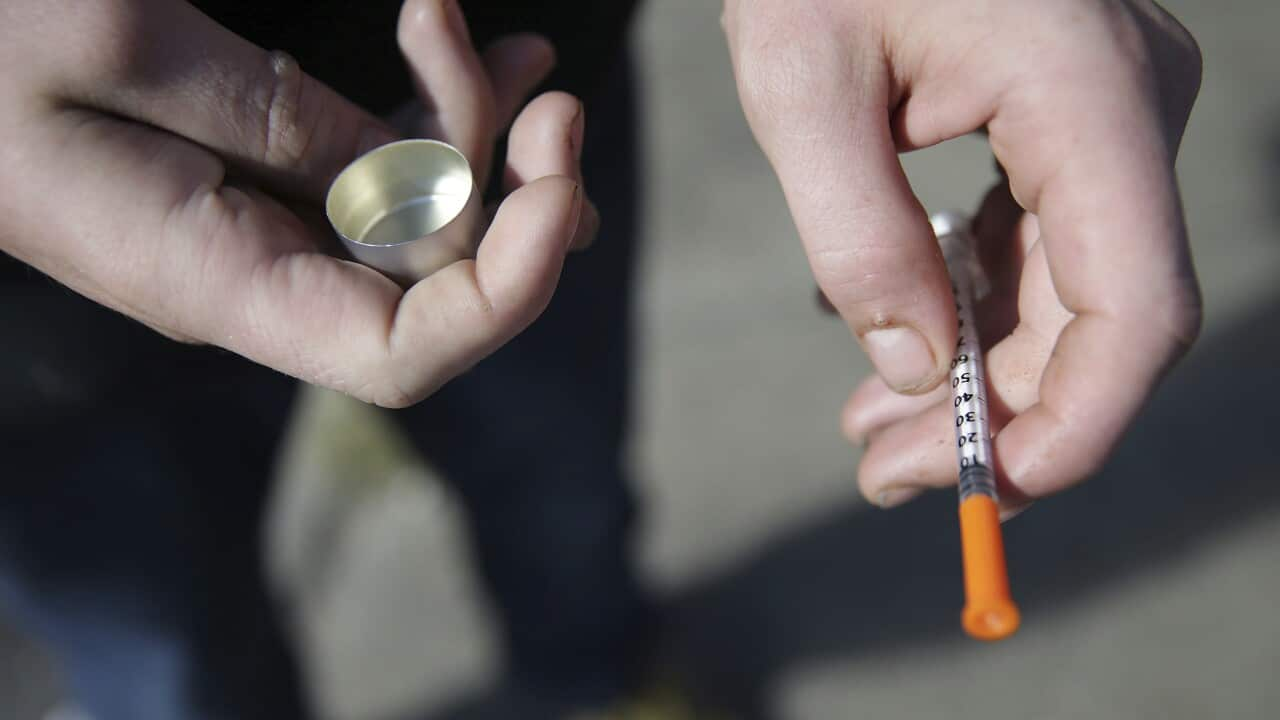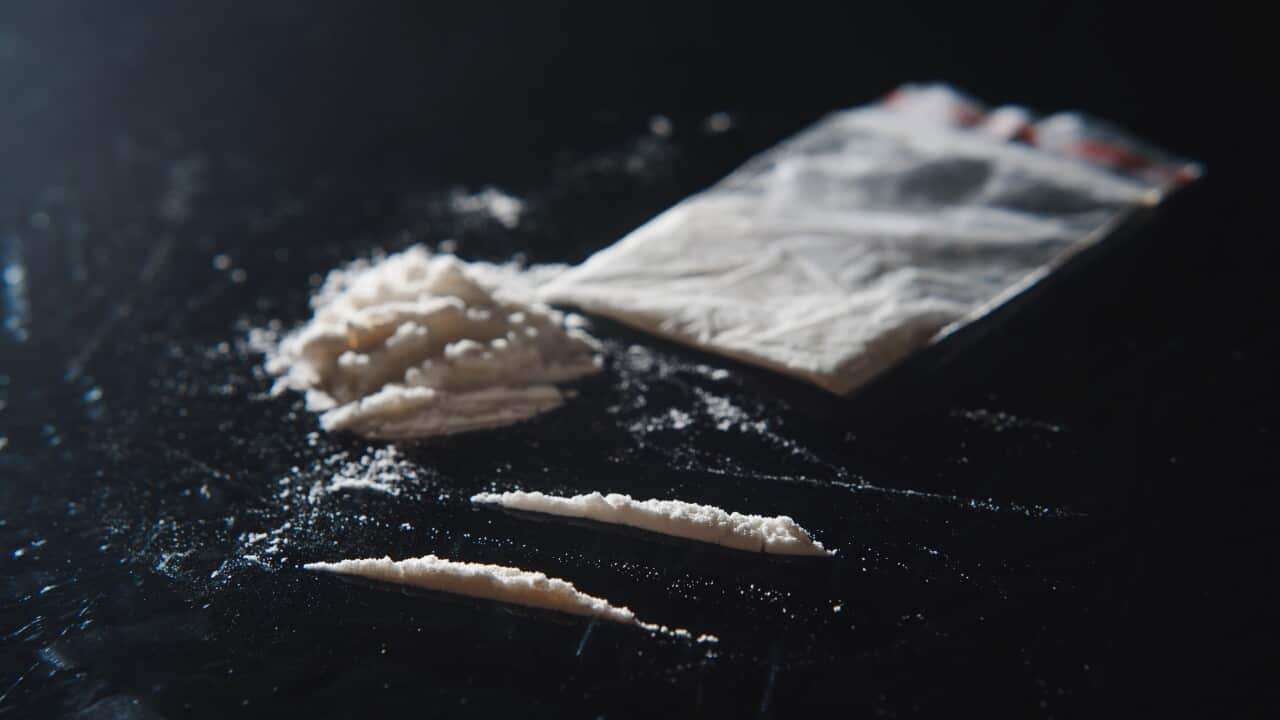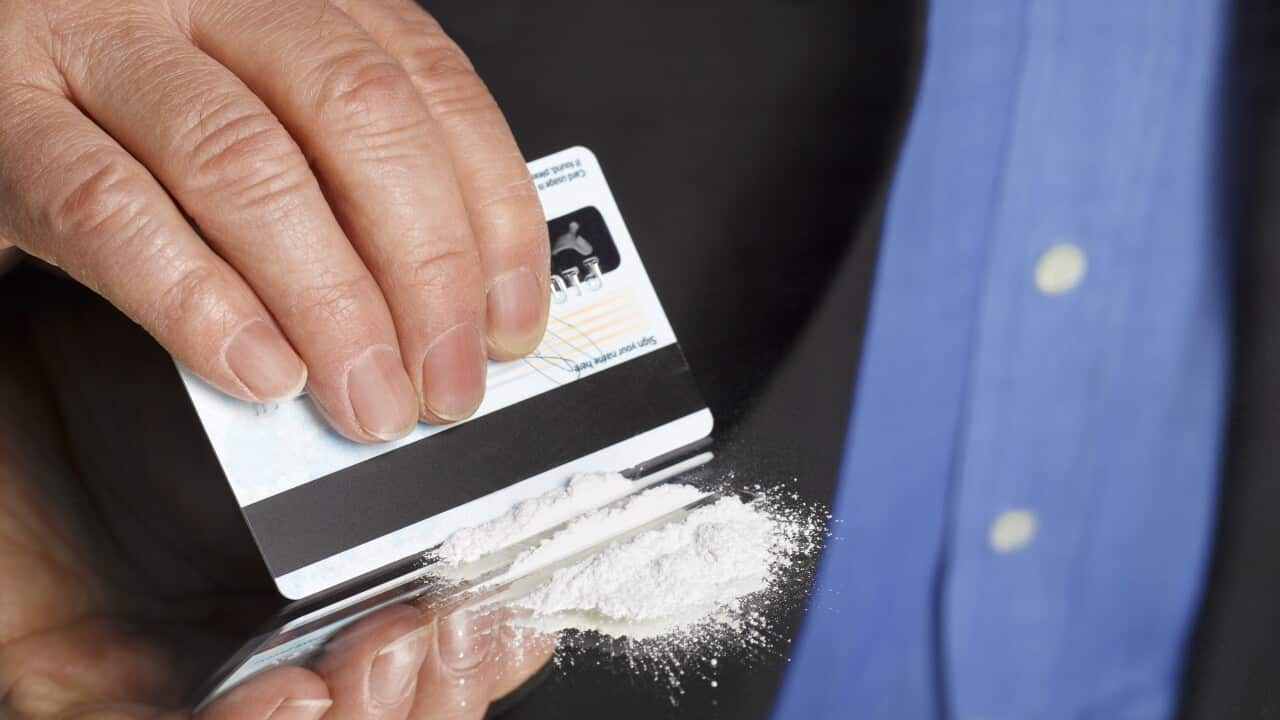When Mel and her friends were in their 20s, they would experiment with recreational drug use, including Gamma hydroxybutyrate — or GHB.
Across long weekends of music and partying in the early to mid-2000s, the depressant became a drug of choice.
While GHB's potential to produce strong sedative effects cemented its reputation as a 'date rape drug' in the early 2000s, Mel says she would adhere to strict rules around it to avoid these effects: she would not drink alcohol while taking GHB, she would use a precise dropper for dosages and always make a note on her phone to clock the time and the amount taken.
"I was always a trepidatious person when it came to recreational drug taking, any risk-taking behaviour — that might sound silly, given the risks — but I always dipped a toe before doing anything," Mel says.
"The crew I partied with, for the most part, were really responsible with it."
The popularity of taking GHB recreationally is growing in Australia at the moment. However, the experience varies heavily depending on the dose.
In small amounts, the illicit drug can produce feelings of euphoria, disinhibition and increased libido.
But differences of as little as 0.5ml can lead to overdose, including loss of consciousness, respiratory depression (slowed or shallow breathing that can stop entirely), muscle twitching and seizures.
Mixing GHB with alcohol also significantly increases the likelihood of these serious side effects.
An overdose of GHB is commonly referred to as a 'blow-out', and Mel says she witnessed them frequently during her partying years from around 2011 to 2015.
"I remember partying with it in house settings and then going out and hearing about guys putting it in their beer and sharing the drink, and then people would blow out because they have no idea how much they're having," she says.
I think people party with it really unsafely — push it, don't track how much they're taking — and it's just a mess and isn't fun and is dangerous.
While she never had a serious overdose experience, Mel says she once had an unsettling experience with GHB at a music festival.
"I had been taking it throughout the night moderately and then we went to bed," she says.
"I went to sleep and woke up like 10 hours later. It was steaming hot; I'd been moved into a different tent [by friends]. The people I was sharing a tent with had napped and left, moved me around and I woke up sweating, under blankets and out cold until like midday."
Mel says the experience "spooked" her because she could not recall what had happened.
Despite now being in her early 30s and a world away from the party scene of her 20s, Mel says she's still open to taking GHB.
"I know how to do it safely and what company you need to keep. I also didn't do it in public settings, really [bar a festival] because I didn't like the lack of comfort or safety if things tipped over a little," she says.
GHB use on the rise
While it is still relatively uncommon compared to cocaine and marijuana, the recreational use of GHB — sometimes known as 'G', 'juice', 'Gina' or 'fantasy' — is on an upward trend in Australia right now.
Data from the National Drug Strategy Household survey produced by the Australian Institute of Health and Welfare shows the number of people aged 14 and over who had used GHB in the previous 12 months doubled from 0.1 per cent in 2019 to 0.2 per cent in 2022-23.
Eleanor Costello, evidence manager at the Alcohol and Drug Foundation, says changing trends in illicit drug use are normal and can come down to cultural shifts.
"They may be more featured in the media and things move out of popularity ... it does go through phases," Costello says.
The current low price of GHB relative to other illicit drugs and its availability may also be driving interest.
Police say they have made significant border seizures of GHB and related substances in recent years.
The Australian Federal Police (AFP) announced in May it had observed a "tidal wave" of imports of the chemical solvent 1,4-Butanediol and seized more than 3.8 tonnes in the first four months of this year.
Known as 'bute', the solvent has industrial applications but was listed as a border-controlled drug last year as it converts to GHB in the body almost immediately once ingested.
AFP acting assistant commissioner Paula Hudson said in a statement at the time that by importing the substance into Australia, "criminal networks are creating a demand and appetite for this illicit drug".
The bigger the appetite, the bigger the profits.
Young women and GHB
There is also evidence GHB is starting to gain popularity among groups that have not traditionally used it much before.
GHB use has been relatively common among the LGBTIQ+ community for a long time — nearly 20 per cent of gay and bisexual men report having used it at least once in their lives.
However, recent research has found that a growing number of young women are ending up in hospitals in Australia after using GHB.
Krista Siefried, the clinical research lead at the National Centre for Clinical Research on Emerging Drugs, says she became interested in studying trends in the drug after seeing more young women presenting with GHB withdrawal symptoms firsthand while working at St Vincent's Hospital in Sydney.
Users can develop dependence on GHB easily and Siefried says when people try to stop, there can be severe reactions.
"What you can see is that it can be quite complicated by things like seizures or delirium. So, we really recommend that people do seek medical advice when they're trying to either cut back or stop their GHB use," she says.
Siefried led research that looked at more than 9,600 emergency department visits due to GHB overdose across 88 hospitals from 2015 to 2024.

GHB has long been associated with criminal behaviour, including drink spiking, sexual assault, rape and theft. Credit: Henglein and Steets/Getty Images
The research also found young women aged 16 to 24 accounted for more hospitalisations over time.
In 2015-17, women accounted for around 30 per cent of hospitalisations, and by 2023-24, that figure had increased to around 40 per cent.
"Traditionally, GHB was known to be used amongst party-going men who have sex with men, particularly, and so that was kind of the area that was most predominantly researched," Siefried says.
"We started to see that GHB use is sort of proliferating to other areas and so what we wanted to do was sort of explore who else is using," Siefried says.
While the report was not able to infer whether those hospitalisations were due to voluntary or involuntary GHB ingestion, Siefried says other smaller studies have found young women self-reporting more GHB use in recent years.
Drink spiking
GHB has long been associated with criminal behaviour, including drink spiking, sexual assault, rape and theft.
The AFP has referred to it as an "instrument of crime", and research literature on young women and GHB has largely focused on its use as a 'date rape' drug.
However, Costello says the use of GHB in drink spiking is actually uncommon compared to spiking with alcohol.
"There is a perception that [GHB] is used, but in many cases it's actually not," she says.
I mean, other depressant drugs may be used as well, but most often the main one that we do see presented is alcohol.
Siefried says it's important to maintain "perspective" about GHB and spiking, given alcohol is "far more likely to be associated with sexual violence, arguably, than any other drug".
However, research notes that determining whether GHB has been used in a drink spiking case can be difficult as it has a short 'half-life', which is the time it takes for the amount of a drug's active substance in the body to reduce by half.
Because of this, GHB becomes undetectable through a urine test after around 12 hours, before some victims will have made it to an emergency department or reported to police.
Harm reduction
For those using GHB recreationally, Siefried stresses a need for broader education around the drug as it becomes more popular.
While overdoses caused by opioids can be treated quickly with naloxone (opioid antagonist), there is no such drug that can reverse the effects of GHB and deaths associated with the drug have risen markedly in recent years.
Between 2000 and 2015, 51 GHB-related deaths were recorded in Australia.
Between 2016 and 2023 — a period half as long — there were 166 deaths.
Siefried recommends that anybody who chooses to use the drug should "go low and go slow" by taking a small dose, avoiding repeating doses and ensuring use with somebody who is not taking GHB.
When a person's breathing becomes shallow, they start to show signs of blue lips or they are vomiting and not waking up, it's necessary to call an ambulance for their safety, she says.
"What we need to take from this is that we need to make sure that people who are new to GHB and communities that are new to GHB use are aware of those harm reduction strategies to make sure they can use GHB safely."
Readers struggling with their use of alcohol and other substances can contact the National Alcohol and Other Drug Hotline on 1800 250 015 for free and confidential support 24 hours a day, 7 days a week. More information is available via Lifeline.
Disclaimer: The information in this article is for general information purposes only and should not be relied on as a substitute for professional medical advice. Readers are advised to consult a qualified health professional for guidance specific to their situation.
Share





